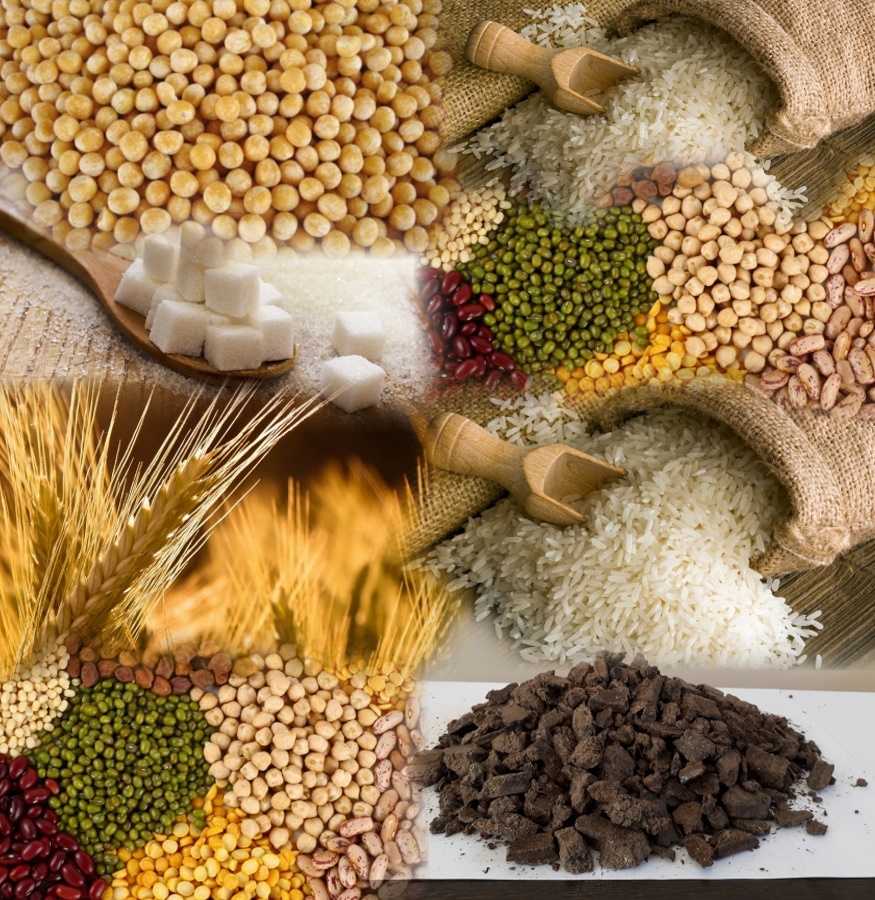Harvesting Savings: Your Ultimate Guide to Buying Agricultural Products

In today's fast-paced world, the importance of understanding where our food comes from cannot be overstated. Buying agricultural products is not just about filling our plates; it is about supporting local farmers, promoting sustainability, and ensuring that we make informed choices about what we eat. With an increasing demand for fresh, organic, and locally sourced foods, it's essential to navigate the marketplace wisely to secure the best quality at affordable prices.
As we delve into the world of agricultural products, we will explore various aspects to enhance your buying experience. From understanding the different types of products available to discovering tips on how to buy in bulk or directly from producers, this guide aims to empower you with the knowledge needed to make savvy purchasing decisions. Whether you are looking for fruits and vegetables, grains, or dairy products, the right approach can lead to significant savings while also benefiting the agricultural community.
Understanding Agricultural Products
Agricultural products encompass a wide range of items derived from farming and cultivation. This includes crops, livestock, dairy, and processed goods. Crops such as grains, fruits, and vegetables are essential for human consumption and form the foundation of our diets. Livestock and poultry provide meat, eggs, and other animal products, contributing significantly to nutrition and food security. Understanding the various types of agricultural products is crucial for making informed choices in purchasing and consumption.

The quality and variety of agricultural products can vary based on factors such as geographical location, climate conditions, and farming practices. Locally sourced products often reflect seasonal availability and can be significantly fresher than those shipped over long distances. Additionally, the rise of organic farming has led to an increase in demand for sustainably produced goods, appealing to consumers who prioritize health and environmental concerns. Knowing where and how these products are grown can influence purchasing decisions.
Buying agricultural products also involves considering the economic aspects, including pricing, availability, and market trends. Consumers can benefit from understanding the supply chain, which affects how products are priced and delivered. Engaging with local farmers' markets or community-supported agriculture programs can provide opportunities to buy directly from producers. This not only supports local economies but often guarantees better quality and fresher options for consumers.
Market Trends and Pricing
Understanding market trends is crucial for anyone looking to buy agricultural products . Prices can fluctuate based on a variety of factors, including seasonality, supply and demand, and climatic conditions. For instance, during peak harvest seasons, the market may see a surplus of certain products, leading to lower prices. Conversely, adverse weather events can drastically reduce supply, driving prices up. Keeping an eye on these trends can help buyers make informed decisions and plan their purchases accordingly.
In addition to seasonal trends, global market dynamics also play a significant role in pricing. Changes in trade policies, import/export tariffs, or shifts in demand from other countries can all impact local prices. For example, if a major agricultural producer experiences a drought, it may lead to increased prices globally, affecting agricultural product costs even in distant markets. Being aware of the global landscape can provide valuable insights into when to make an agricultural purchase.
Moreover, technological advancements and innovations in agriculture can also influence pricing. The introduction of new farming techniques or genetically modified crops can lead to increased yields and efficiency, which may result in lower prices for consumers. Additionally, improving logistics and supply chains can minimize costs associated with transportation and storage, further impacting the final prices of agricultural products. Monitoring these developments can give buyers an edge in timing their purchases effectively.
Tips for Smart Purchasing
When it comes to buying agricultural products, it's essential to understand the importance of quality over quantity. Take the time to research different suppliers and farmers. Look for ones that prioritize sustainable practices and offer products that are fresh and locally sourced. Building a relationship with local farmers can also lead to better prices and unique varieties that you may not find in larger retail stores.
Another crucial aspect is to be mindful of seasonal availability. Purchasing agricultural products that are in season not only ensures better flavor and freshness but also often results in lower prices. Make a habit of checking seasonal charts for fruits, vegetables, and other products you need. Being flexible with your menu can allow you to take advantage of sales and special offers on seasonal items.
Finally, always compare prices before making a purchase. Utilize online platforms or farmer's markets to gauge current prices in your area. Don't hesitate to ask about bulk purchasing options, which can yield significant savings. If you plan ahead and remain informed about local market trends, you can maximize your savings while supporting local agriculture.